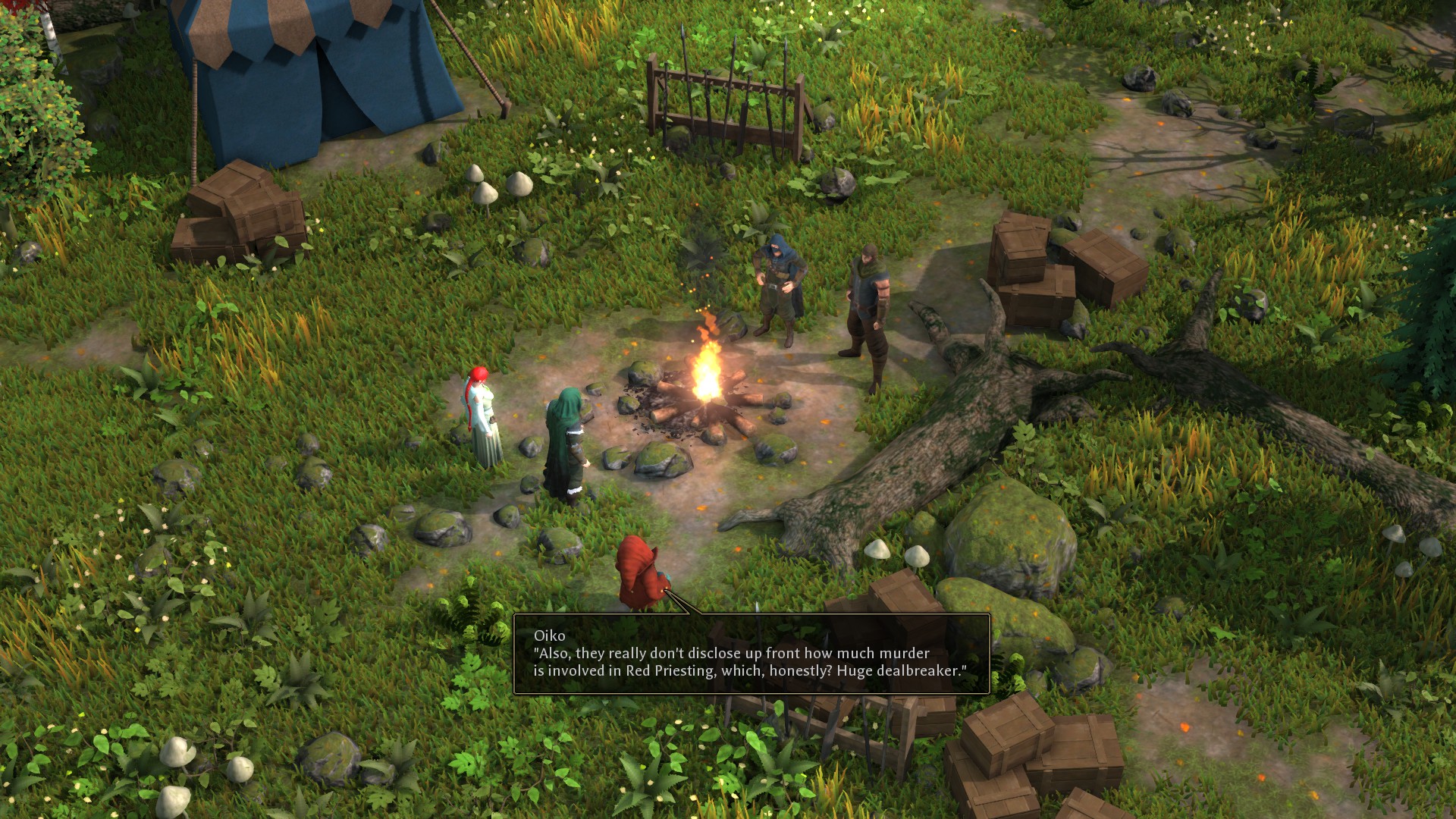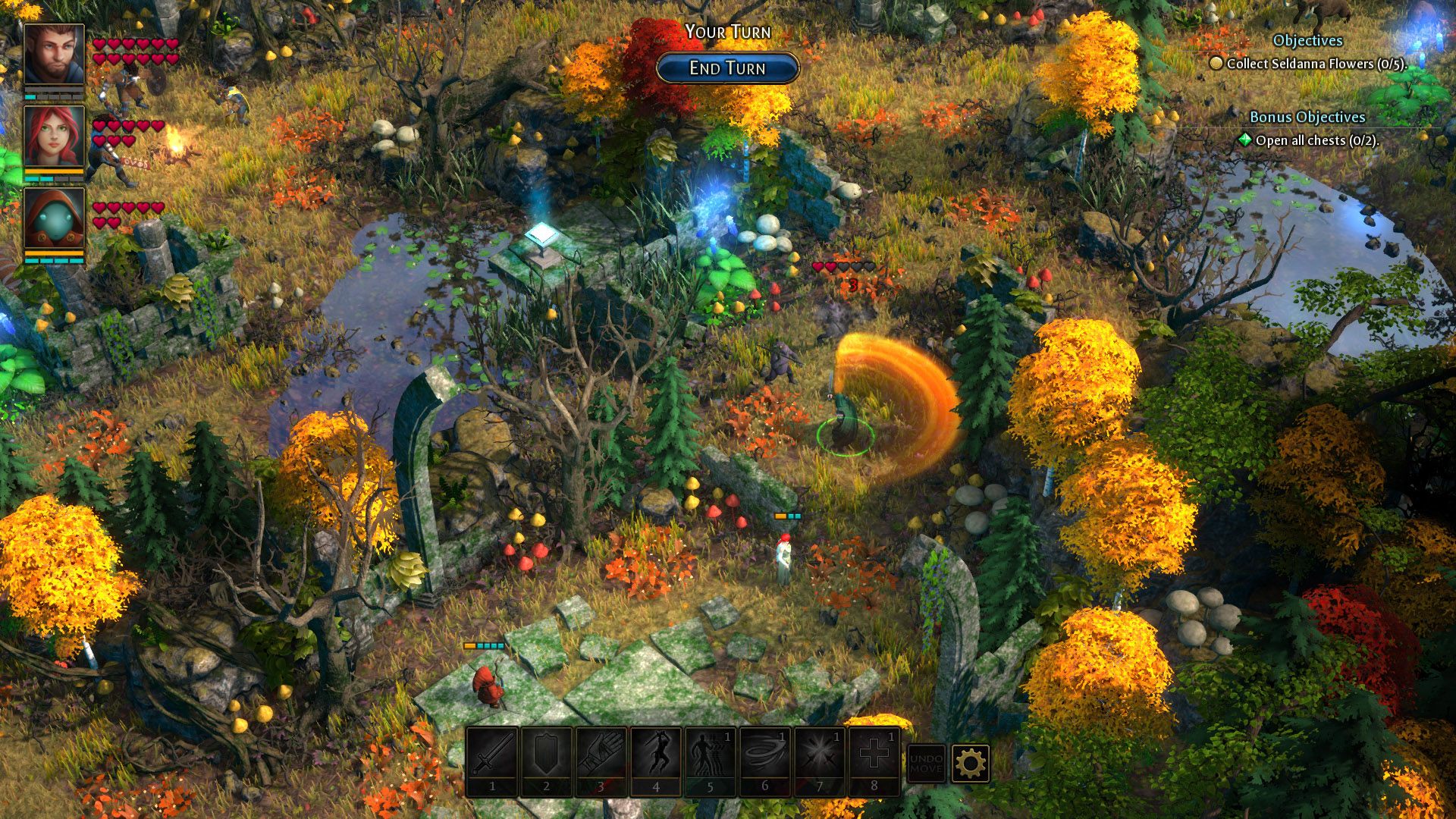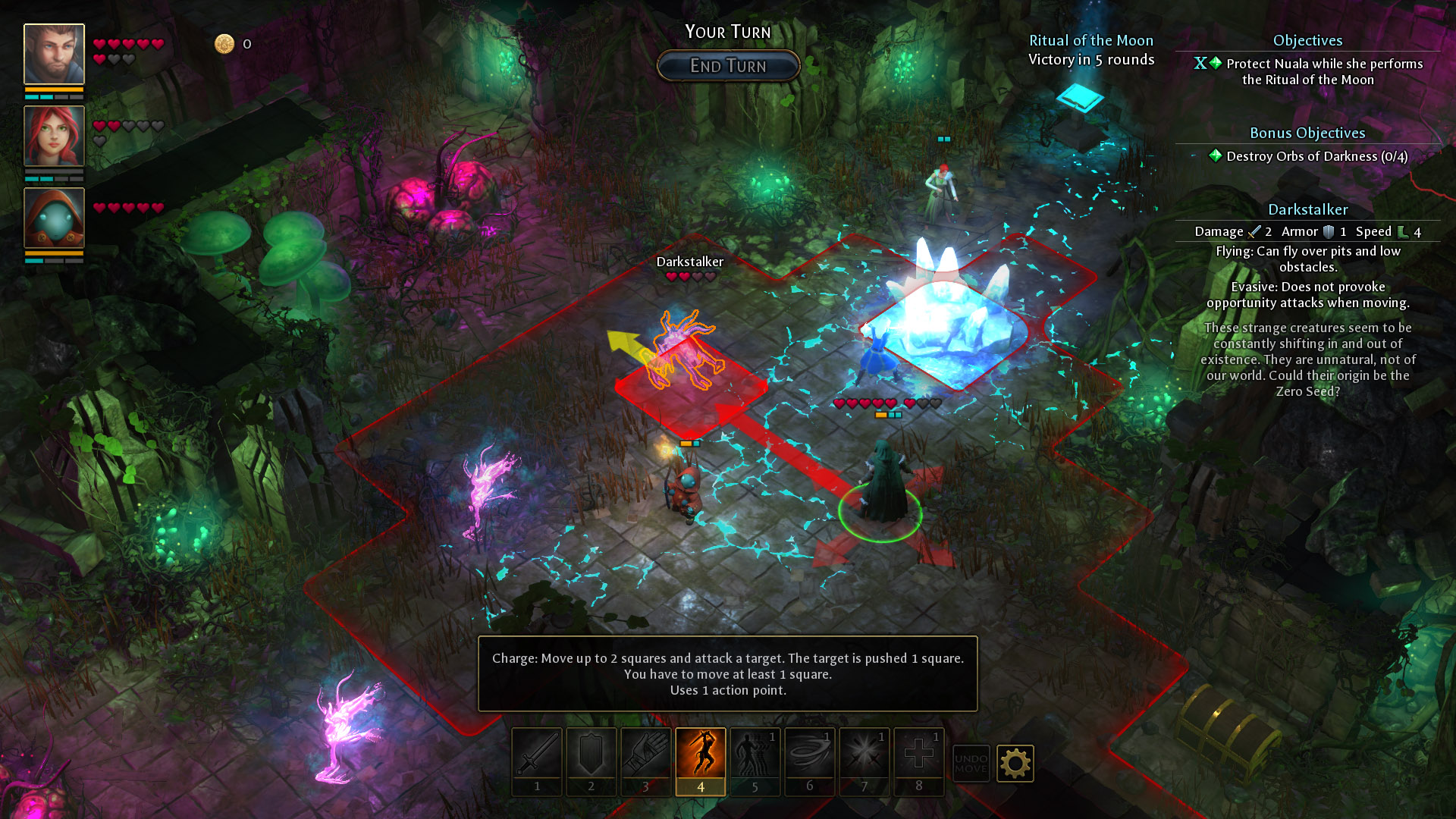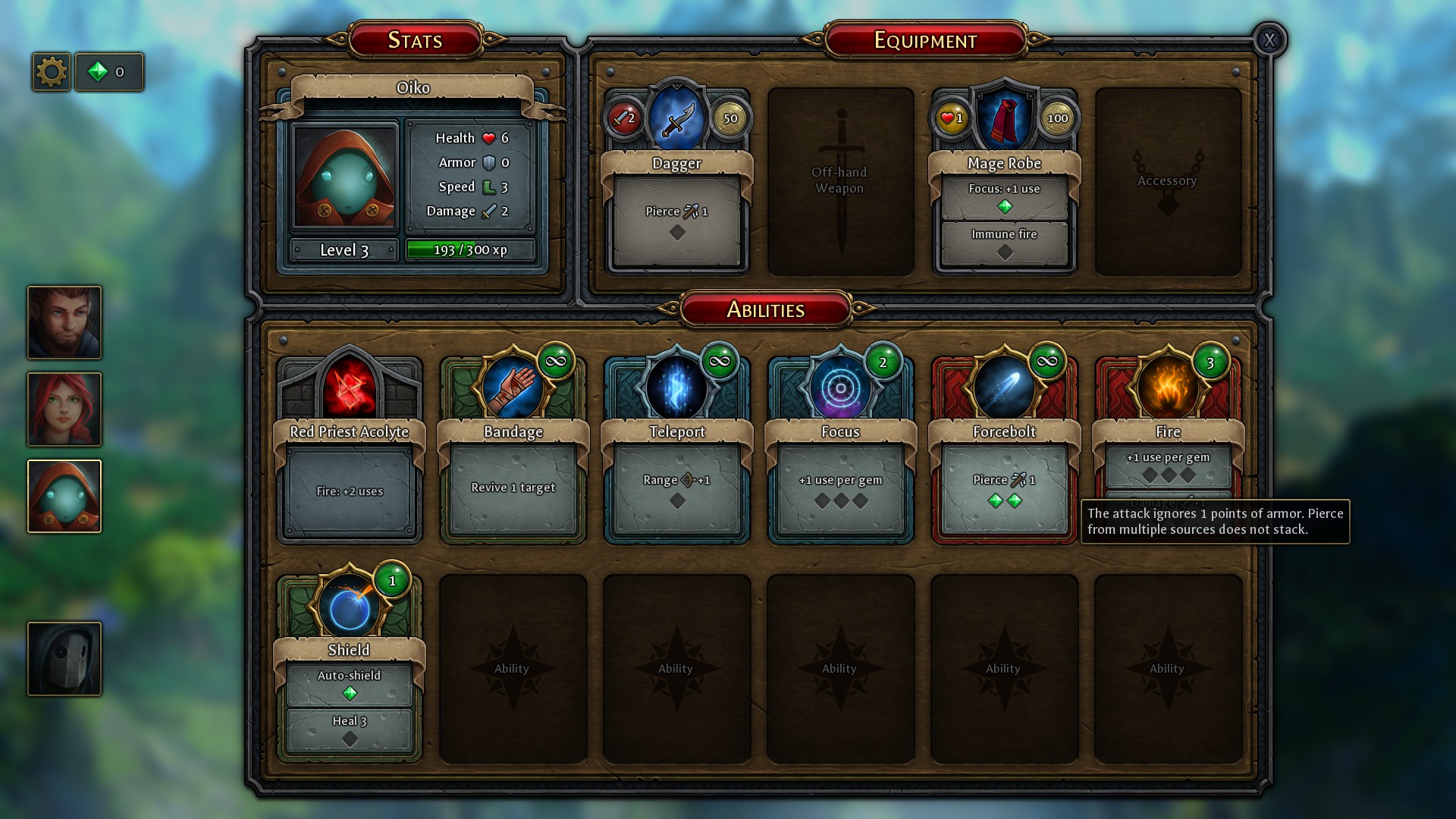The Legend of Grimrock devs are back with Druidstone, a new tabletop-inspired tactical RPG
Druidstone: The Secret of Menhir Forest is out on May 15, and we talked to its creators about moving on from Grimrock.
I was surrounded on all sides. I'd managed to rescue the prisoner, but now we had to fight our way back out of the dungeon. Reinforcements poured in from the south, so I sent my beleaguered party north. When we made it to a room with pressure plates and fireball-spewing statues, more reinforcements spawned at the entrance and quickly closed in.
Druidstone owes much of its tactical gameplay to tabletop RPGs and board games, such as Dungeons & Dragons and HeroQuest
What followed was a harrowing, tense turn, as I carefully positioned my warden for a whirlwind strike, blasted out a fireball with my acolyte, and tried to figure out what I could do with a useless unarmed prisoner. That’s when I remembered the pressure plates, and smiled as I noticed the bad guys were standing pretty close to those statues. He may have been unarmed, but his legs were working just fine.
That wasn't the first dungeon escapade I just barely scraped through in Druidstone: The Secret of Menhir Forest, a new tactical RPG from the creators of Legend of Grimrock. Druidstone is out on May 15, and though it's not a first-person, grid-based dungeon crawler, it shares much of the DNA that made the Grimrock games so good. The lush fantasy art style, stirring orchestral soundtrack, and carefully balanced level design all survived the transition to a strategic top-down RPG.
The Legend of Druidstone
For Druidstone to be born, The Legend of Gimrock had to die. Or at least be shelved for the time being.
"Grimrock 1 and 2 took over four years to make, and we poured our hearts and souls into those games," says Juho Salila, art director for Druidstone and the Grimrock series. "It would be a massive task to make Grimrock 3 and improve the game as Grimrock 2 improved Grimrock 1. We needed a break from that world." The team at Almost Human began to break up, with many developers moving on to other projects.
"At some point Petri [Häkkinen, designer and programmer on Druidstone and the Grimrock series] and I started talking about prototyping games just for fun," says Salila. "After doing several prototypes it got more serious and we started a new company [Ctrl Alt Ninja] to make Druidstone. We didn’t feel the pressure of doing another Grimrock game with the new company."
The Grimrock games sold well enough to help fund the development of Druidstone. As with Grimrock the developers avoided Early Access, and crowdfunding remains difficult in Finland. "We were also not that keen on the overhead caused by the crowdfunding process," says Salila. "We want to make games, not post t-shirts and stickers all over the world."
Keep up to date with the most important stories and the best deals, as picked by the PC Gamer team.
During Druidstone’s early stages the gameplay evolved substantially. The biggest change: Every level was once procedurally generated. "We really wanted to make the game work with procedurally generated levels," says Häkkinen."I guess we fell into the old ‘Hey, let’s make a level generator and we don’t need to do any level design’ trap. But it didn’t mesh with the compact game design. At one point we made a single level in a few hours and it was more fun than any of the generated levels."
"It’s a lot harder to make the levels look good if everything is randomly generated," says Salila. "We also found that we could actually make more variation in gameplay tactics if the levels were hand-made."
Clever level design helped make the Grimrock series so memorable, with deviously hidden traps and head-scratching puzzles. While Druidstone lacks dungeon crawling exploration, many of Grimrock’s classic dungeon elements, such as levers revealing hidden rooms, pressure plates activating traps, and surprise enemies spawning in at the worst moments, are included in abundance. "We wanted to make the dungeon levels look and feel like Grimrock—that’s how we like our dungeons," says Häkkinen.
Although the art style is similar, Druidstone takes place in a different fantasy universe than Grimrock, including a different tone. The writing in the Grimrock games was mostly limited to scribbled notes, but Druidstone features numerous cutscenes between my small party of heroes, the druids we work for, and the red priests we fight against.
Dialogue is quick, snappy, and delightfully funny, particularly from the motor-mouthed pint-sized mage, Oiko. "Whereas Gimrock is dark and gloomy, Druidstone is more light-hearted, with some really fantastic creatures like the Shido," says Häkkinen. "I like to think that both worlds are connected in an overarching meta-universe. Both games have themes of other worlds and links between them."





Tabletop Roots
While Grimrock was clearly inspired by classic grid-based dungeon crawlers, Druidstone owes much of its tactical gameplay to tabletop RPGs and board games, such as Dungeons & Dragons and HeroQuest. "We are avid board game players and Druidstone is certainly inspired by many of them," says Häkkinen. "We really like the compactness of board games, the small numbers, and the emergent complexity that arises from the seemingly simple rules."
As a big fan of Gloomhaven, a popular tactical RPG board game, I was delighted to see some major similarities in Druidstone. Each of my three party members have basic attacks and special abilities and spells they can perform a limited number of times each battle, not unlike the per-rest abilities in D&D or loss cards in Gloomhaven. The warden’s whirlwind strike hits all adjacent enemies, but figuring out when to expel its only use is often an agonizing decision.
"I heard about Gloomhaven only a few months ago and immediately knew I had to get it," says Häkkinen. "It’s interesting to see how completely separate design processes have ended up with a result that in some ways resemble each other very much. I was reading [Gloomhaven designer] Isaac Childres’ blog the other day and he mentioned Grimrock as one of his inspirations. Now the circle is complete!"

As my Druidstone party levels up they gain new abilities, and I can use gems earned from completing objectives to enhance those abilities. Gems can boost damage, add status effects, or increase the number of uses per battle. This intuitive and swappable upgrade system works similarly to Into the Breach, which is exactly by design.
"Into the Breach is a true masterpiece, and one of the more recent games I’ve enjoyed," says Häkkinen. "The undo last move feature in Druidstone is directly inspired by Into the Breach." Furthermore the scout hero Aava has the ability to rewind time, letting me fix some of my poorer decisions—let's call them experiments. It's a welcoming feature in a game that doesn’t allow you to save scum your way through a fight.
While I’m a little disappointed that I’m not playing The Legend of Grimrock 3, I’m satisfied that the minds behind one of my favorite indie series are good at more than just first-person dungeon crawling. Druidstone is a triumph of great game design, pulling in the best elements of many tactical board and video games, along with the developers’ signature levels of art, writing, and polish, and a post-launch level editor should help extend its life even further. Says Häkkinen: "We hope people enjoy Druidstone and we can keep doing what we love."

